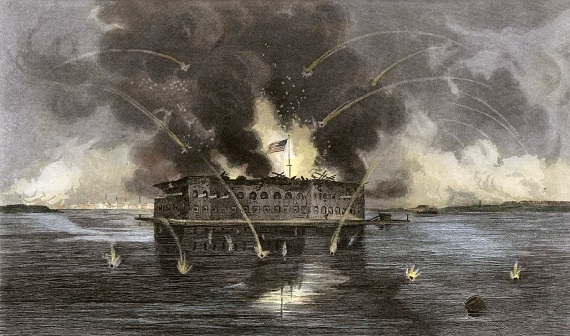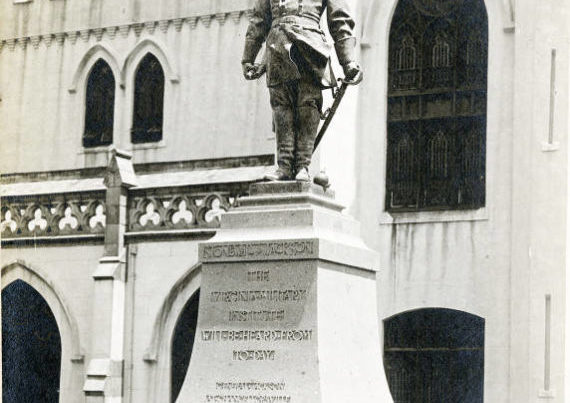From the Author’s Preface of E. Merton Coulter, The South During Reconstruction, 1865-1877 (1947).
AMERICANS have generally called the fifteen years following the Civil War the Reconstruction period, and writers in this field until recently have let the reconstructing processes crowd out of their narratives everyday developments in the lives of the people. This custom has been especially true of those who have written about the South; for this region, being a war casualty, became the victim of a Federal government experiment. The biggest news was always what Congress was doing to the South, or what the agencies it had set up were doing; and these happenings were what Southern leaders thought about most, wrote about most in their private correspondence, and what the newspapers published. It is, therefore, easiest to present this most evident picture. There were, nevertheless, with all the political and constitutional abnormalities of the times, the ordinary activities of the people, as they sowed and reaped, went to church, visited their neighbors, sang their songs, and sought in a thousand ways to amuse themselves. The point of view set forth in this work is the South during Reconstruction—not Reconstruction in the South.
In the minds of Southerners, to reconstruct meant to put the Union of the states back as it was before the war. This understanding might well be expected of them, the most conservative of Americans, but it ignored realities which it were best Southerners had recognized. The dominant political element in the North soon showed it had no such intentions. Since no armistice was signed or treaty of peace made, it believed that there were no terms of surrender, either stated or implied, which it need respect. Northerners would seize this opportunity not only to remake Southerners in the many respects that had no direct relationship to the war; they would also remake the Union by not only degrading the Southern states but in the process also depriving all states of much of their power and bestowing it upon the central government. Here was the fruition of a growth in extremism evident in the North long before the war broke out, but now made easy by that war having been fought. This movement was not only concerned with the powers of government and its subserviency to the expanding economic interests of individuals but it was also a faint glimmering of a changing world, reflected most vividly in English liberalism and French radicalism.
The South set itself with determination against change, whether it be in the form of government under which it was forced to live or in the ways of life which its people had developed through generations. Southerners did not succeed in stopping a reshuffling of governmental powers in which all states, North and South, were losers; but they did prevent the Radical North from carrying out its cherished desire to remake them and their way of running their governments. When the North gave up its efforts in 1877 in failure, the South was permitted within reasonable limits to reconstruct itself, a process which may not yet be considered ended.
It is particularly true that in this period strong human emotions rose to such heights that they became one of the greatest fundamental facts in Southern developments. What happened was often of less significance than what the people thought and wanted, and so a study of the psychology of the South as far as it is possible looms into importance. The nearest approach to this uncertain science can be made through what Southerners said. What they believed to be the fact, therefore, became more important than what was actually the fact. For this reason, then, a great many direct quotations have been used in this work; and a greater part of the narrative has been made to progress through direct contemporary expressions than might be warranted in treating a less abnormal period of history.
No precise definition of the South is possible. When “South” or “Southerners” is used without a limiting adjective, it is normal to assume that the dominant point of view is intended. In this sense what Negroes or other minorities thought is, of course, not implied. True enough, it is not always easy to determine what the dominant point of view (or the minority opinion, for that matter) was; for certainly, apart from politics, there were many points of view. There were Baptists and Methodists and Catholics; there were saints and sinners; there were rich and poor; there were law observers and lawbreakers; there were rural people and city dwellers. Geographically, the South in Reconstruction times unifies itself for examination and treatment around the eleven states which made up the Confederacy more clearly than in any other period of its history. Reconstruction programs became the great common denominators. For that reason this work has placed emphasis on the old Confederacy, though the Border states have not been ignored.
As each generation feels constrained to rewrite the past, points of view and methods of approach necessarily change, and so revisionists arise. If they remain within the reasonable bounds of established facts, they may well make lasting contributions in fresher interpretations and in the presentation of new information; but if they depart from the old channels to attract attention in novel and unsubstantiated points of view, they themselves may soon be revised. The author of this work feels that there can be no sensible departure from the well-known facts of the Reconstruction program as it was applied to the South. No amount of revision can write away the grievous mistakes made in this abnormal period of American history. This writer, therefore, has not attempted it. Departing from the usual, however, he has sought to discover as far as possible what were the aspirations of Southern white Radicals and Negroes and what was their defense against charges made by traditional Southerners. It is hoped that evidences of this attempt will be found in the following pages. Also, he has made an effort to broaden the picture of the South during Reconstruction by giving greater attention to the lives of the people, white and black, in their many interests and activities apart from politics. In these respects more than in any others, this work would lay claim to have revised older treatments of the Southern Reconstruction period.
It ought to be said that the author has chosen to write this volume in the atmosphere and spirit of the times here portrayed rather than to measure the South of Reconstruction by present-day standards. In so doing he believes that he has added in this perspective a sort of historical fourth dimension which gives a balance attainable in no other way. If there be those who are dis-posed to condemn the South for not holding the point of view of the mid-twentieth century, especially on social and racial problems, and who also might be disposed to belabor the author for not measuring the South of that time by the mid-twentieth century standards, let them keep in mind that great changes have come in human concepts since 1865 and let them also remember what the author set out to do….






